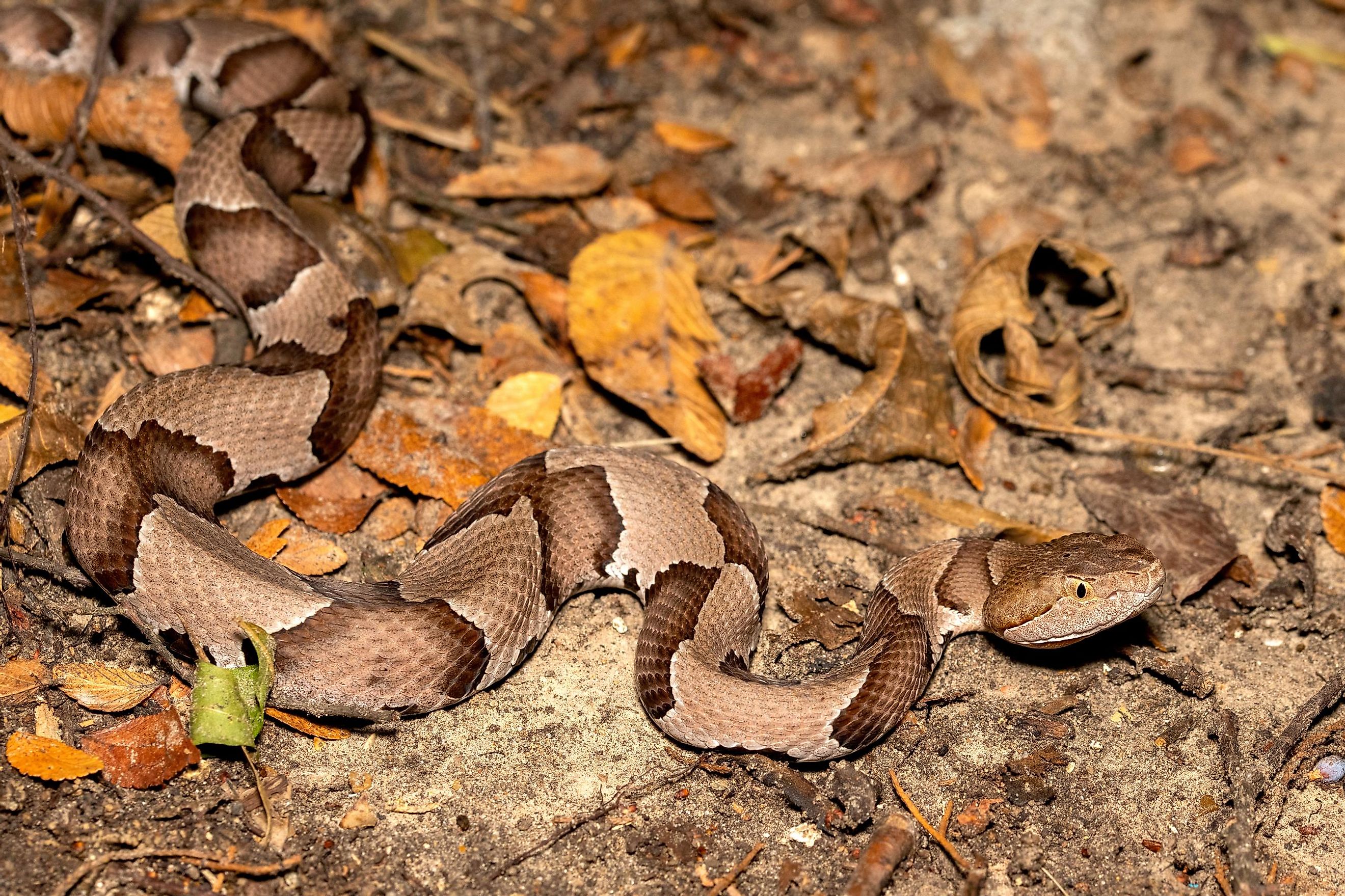
The 12 Deadliest Animals In Pennsylvania
Pennsylvania is home to diverse wildlife, from majestic deer browsing in forests to colorful songbirds flitting among trees. However, not all animals in the state are as harmless as they appear. Several species have the potential to harm or even kill humans under certain circumstances. This article will explore the 12 deadliest animal species native to or commonly found in Pennsylvania.
From venomous snakes to aggressive insects, these animals present real risks to residents and visitors alike. In many cases, attacks are provoked, such as disturbing a nest. Knowing which animals to avoid and what to do if bitten or stung can help prevent serious injury or death. Overall, wildlife-related fatalities are rare in Pennsylvania thanks to knowledge and caution. Read on to learn more about the deadliest animals in Pennsylvania and how to act around them in case of an encounter.
Eastern Copperhead
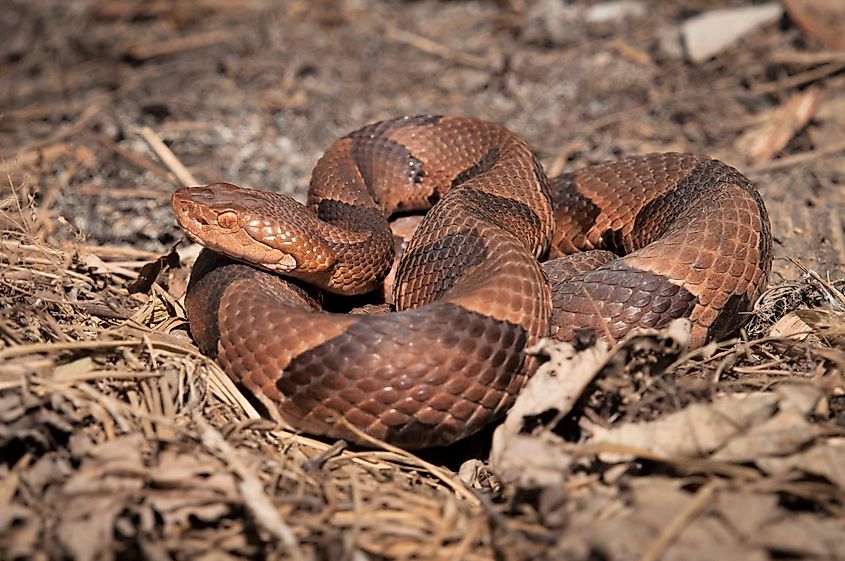
The eastern copperhead (Agkistrodon contortrix) is a venomous snake species occurring in the eastern states of the United States. They spread across most counties, choosing a habitat in remote wilderness and suburban locations. As a member of the viper family, they have chunky bodies with broad heads, growing a length of 37 inches. Their coloration varies from a pale tan to a pinkish tan, with distinct hourglass-shaped bands along the back. Copperheads have deadly hemotoxin that destroys blood cells, and the camouflage coloration means that hikers have no chance of spotting them when exploring remote trails.
As dangerous as they may be, copperhead bites rarely end up in fatalities as they tend to use false bites and dry bites to warn you. Depending on the type of bite, effects range from localized inflammation to necrosis and severe pain, calling for quick medical attention. Give them a wide berth in case of an encounter, as they are probably more scared of you than you are of them. They play an essential role in the ecosystem by helping to control small rodents, lizards, little birds, and frog numbers.
Timber Rattlesnake
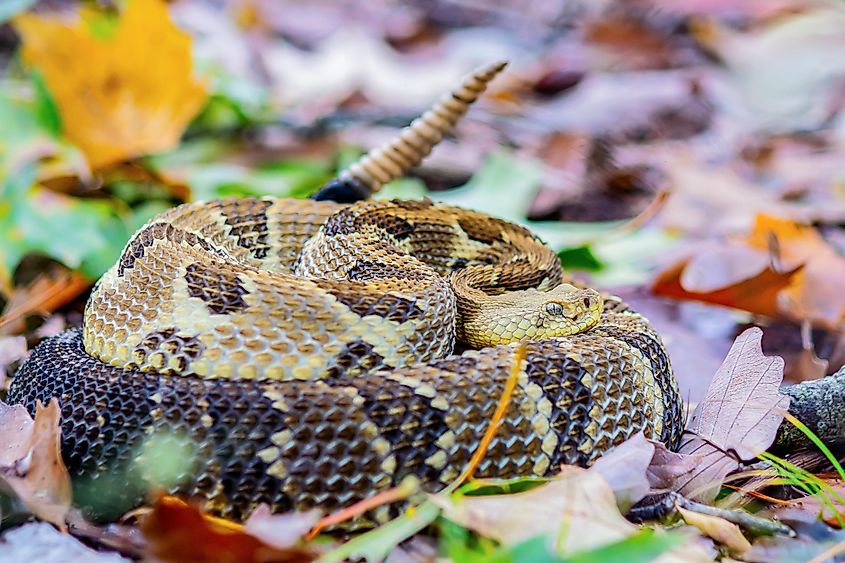
The timber rattlesnake (Crotalus horridus) is the most encountered poisonous snake species in Pennsylvania, with a footprint in 50 out of the 67 counties. Their ideal habitat includes open bluffs and rocky outcrops where ample prey like frogs, birds, and smaller snakes attract these predators. However, their ability to thrive in diverse habitats increases the likelihood of human encounters, especially with adventurers in rural Pennsylvania. Adult timber rattlesnakes average around 5 feet long, varying coloration from yellowish-brown to black. As ambush specialists, these snakes rely on camouflaging within the terrain and striking swiftly when prey ventures within range, waiting for their potent venom to take effect.
While their venom poses serious health risks, including possible death to humans, timber rattlesnakes would prefer to slither away unnoticed whenever possible. Nevertheless, any snakebite constitutes a medical emergency. Bite incidents involving these snakes are rare in Pennsylvania, yet outdoor enthusiasts should still give them a safe distance if crossing paths, as the reptiles are likely focused on hunting rather than aggression at such moments.
Eastern Massasauga
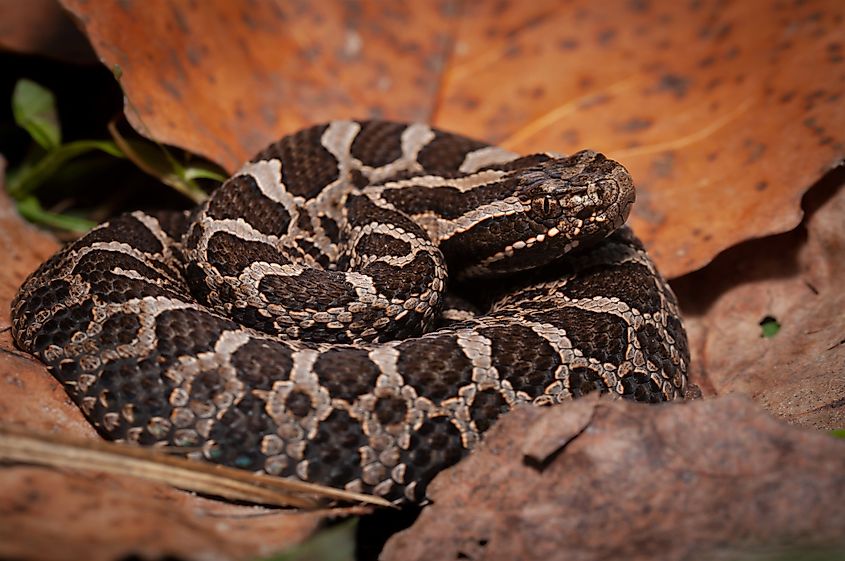
The eastern massasauga (Sistrurus catenatus) completes the trio of venomous species in Pennsylvania, choosing wet regions of the state as their habitat. You can find them in floodplain forests, swamps, lakes, wet prairies, and along rivers, but they migrate to drier areas in the summer. They are smaller than their poisonous counterparts, with stout bodies and heart-shaped heads. They produce a potent cytotoxin that acts on tissue to disrupt blood flow and prevent clotting. Despite their apparent risks, these snakes don’t attack humans, only choosing to strike when they feel threatened.
Adventurers in Pennsylvania have a high chance of crossing paths with the eastern Massasauga and will be wise to maintain a safe distance between them. Unfortunately, these animals are listed as endangered, facing persecution from hunters since the early days. They also face human attacks out of misplaced, which only underscores the need to preserve them and respect their habitat.
Snapping Turtle
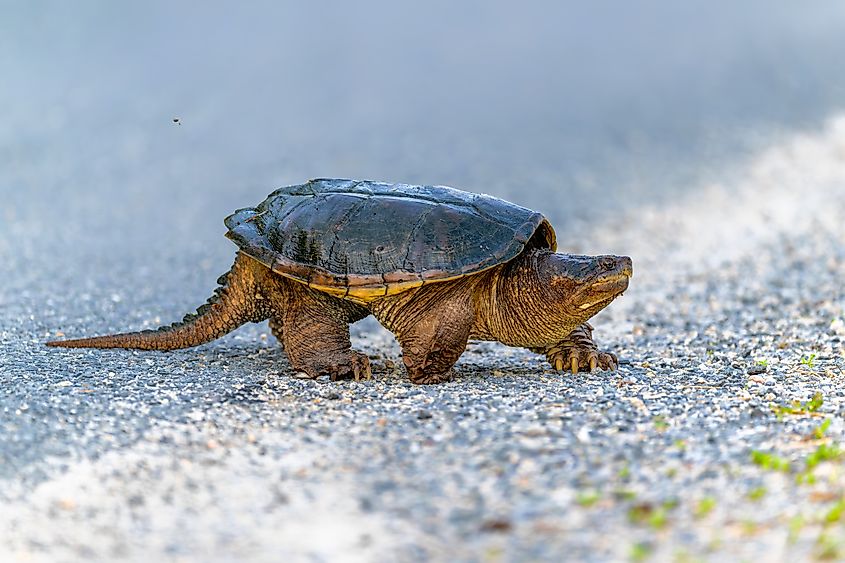
This prehistoric-like species with a powerful bite is widespread across Pennsylvania, choosing slow-moving waterways as their habitat. You can find them in swamps, rivers, lakes, and ponds, although female adults may stray away from the water source. They weigh 35 pounds as adults, growing to 18 inches, and are distinguished by their elongated necks, long tails, and chunky heads. Snappers are harmless at first glance, slow and docile, as they hunt for frogs, insects, and small fishes in the water. However, they pack a deadly bite that can leave a nasty injury on the victim.
Interactions with humans happen when partaking in different aquatic fun in Pennsylvania’s backcountry. While attacks are unheard of, snappers will defend themselves when threatened, and this occurs when humans try to pick them up. Bite wounds can also end up infected, complicating the issue. Luckily, avoiding them almost eliminates any risk from the snapping turtle.
Black Widow
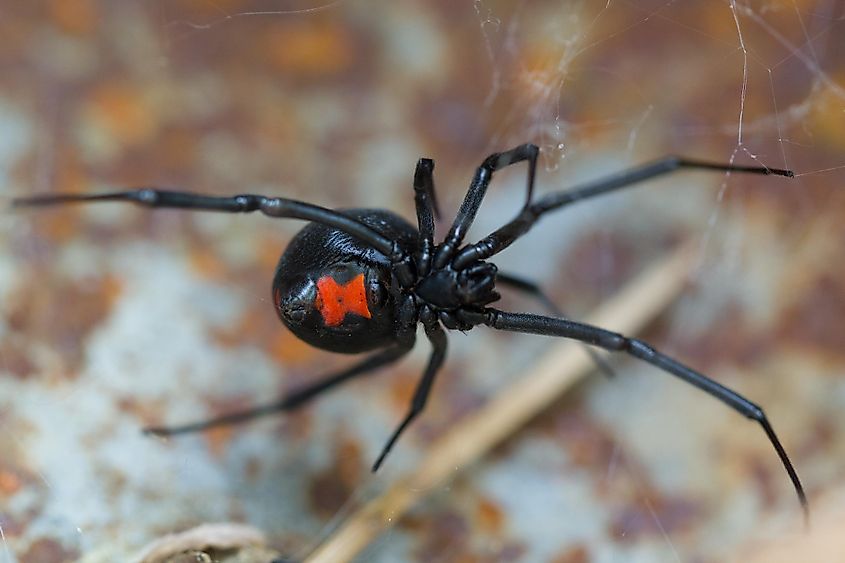
Unfortunately, one of the most dangerous spider species in the world, the black widow (Lactrodectus mactans), is a resident of Pennsylvania. They inhabit dark and quiet spaces, such as under rocks, in unlit garage corners, crevices and cracks on the wall, etc. Their tendency to establish nests around human settlements increases the likelihood of encounters. These lethal crawlers are the state’s most poisonous spiders, with a conspicuous red hourglass-shaped mark contrasting their black bodies. Males are markedly smaller than females, with the latter growing to 19mm. Despite their diminutive disposition, they pack an extremely toxic bite, over ten times stronger than a rattlesnake’s.
Luckily, black widows are not aggressive and only bite for self-defense when their nests are attacked. Those who are unlucky enough to suffer a bite feel severe pain followed by a total collapse of the nervous system. Without emergency medical attention, death is almost guaranteed and swift. Avoid any black widow or spider webs in your home, and call an exterminator to be safe.
Tick
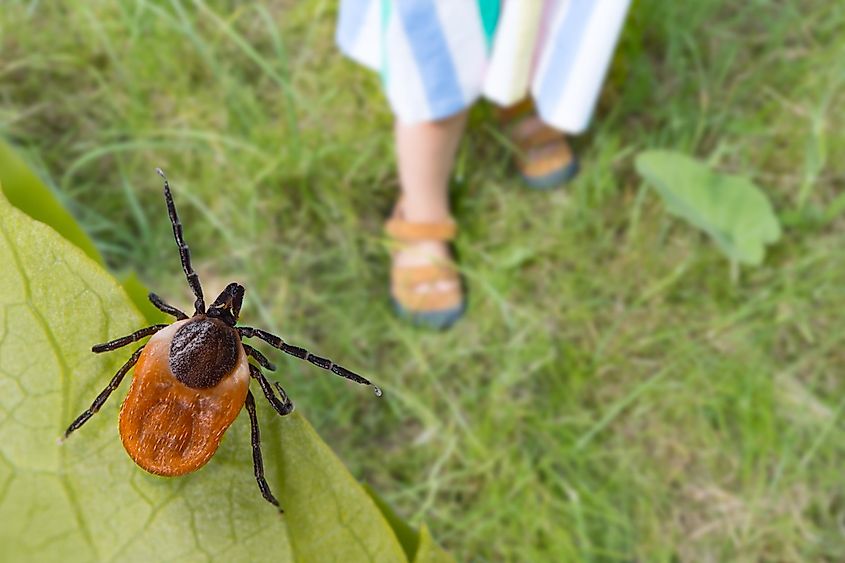
Don’t be fooled by their tiny size; ticks (Ixodida) are one of the deadliest animals in Pennsylvania. These parasitic arachnids with an insatiable appetite for blood pose a threat to domestic animals, pets, birds, and even humans. They mainly occur in the state's southern counties, close to urbanized areas. Often, they inhabit grassy and wooded areas, waiting to latch onto possible hosts as they pass by to begin their blood-sucking mission. Ticks have a black or brown color with reddish body markings, with a tiny size that gets bigger as they suck more blood from their hosts.
What makes them dangerous is their ability to spread infections when they bite through your skin. The longer a tick stays latched onto your skin, the higher the probability of infections like Lyme disease and tularemia. If you notice a tick on your body, remove it immediately and wash the affected area with soapy water before seeing a physician.
Coyote
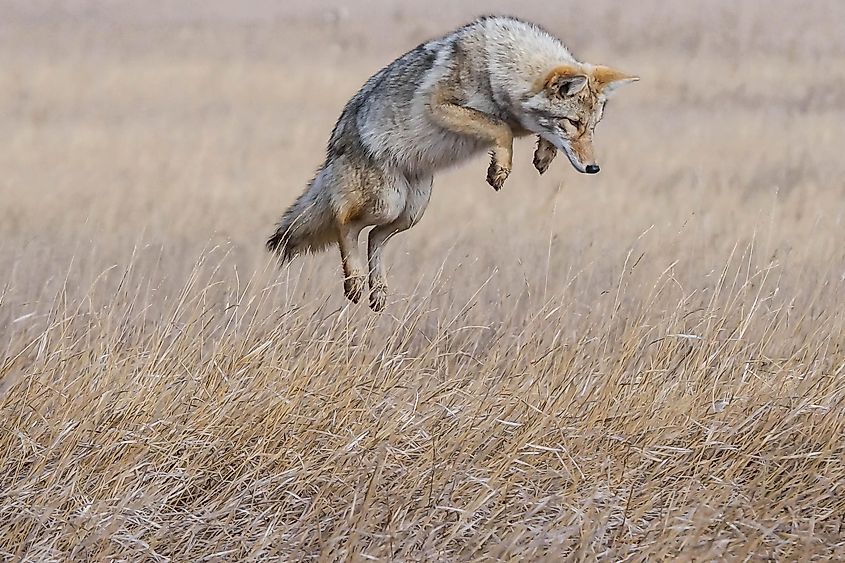
Coyotes (Canis latrans) are found throughout the state but are predominant in the northern half. Their habitat ranges from prairies to woodlands and densely covered marshes, where they hunt for small prey like mice and rats. A member of the dog family, coyotes are smaller than regular dogs and have a grayish to brown color with a bushy tail and elongated muzzle. Although their diet is primarily carnivorous, they can feed on vegetative food sources when needed. They have sharp canines and sneaky behavior, with most human conflicts arising from encounters with pets.
These cunning canines can sometimes be scavengers and stray into backyards looking for food in the trash cans. While they won’t attack humans, their bite can spread diseases, including rabies, on rare occasions. Unfortunately, there is a high mortality rate arising from persecution by hunters and traps, with only 15% of their population maturing to adulthood. An easy way to avoid them is to bring your pets inside at night and keep your trash can out of reach.
American Black Bear
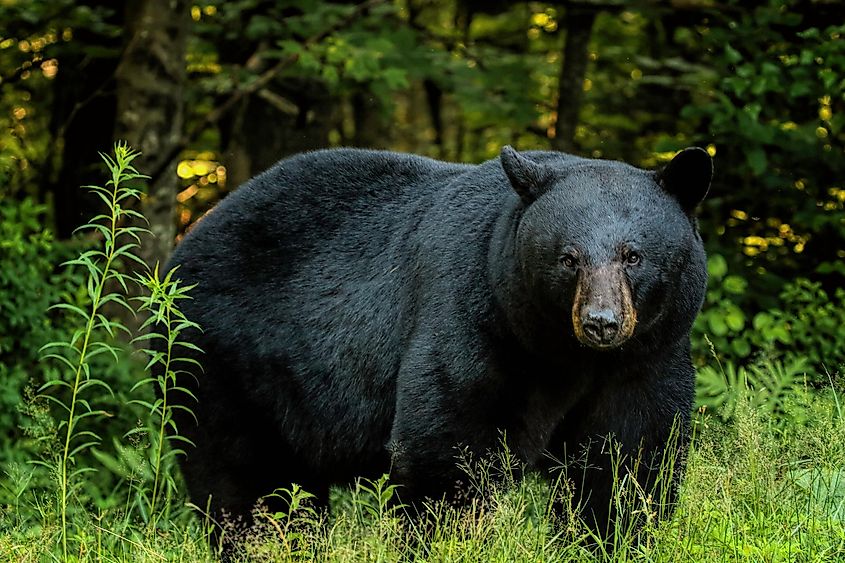
Black bears (Ursus americanus) are among the larger animal threats in Pennsylvania. They inhabit forested regions around the state, occupying over three-quarters of its territory. Adults can weigh up to 600 pounds and reach six feet standing on twos. Their omnivorous diet includes smaller animals, fish, honey, and berries. This means they are drawn to cornfields and berry farms, which results in conflict with farmers. Black bears also can be found snooping in backyards, looking for food in the bird feeders and trash cans. Their long, sharp claws, large canines, powerful bite, and aggressive demeanor make black bears a dangerous adversary.
Encounters are commonplace along the trails, and nasty confrontations have been reported. Although they are primarily shy around humans, they won’t think twice about defending their territory. So, the best way to avoid this is to keep off them altogether. Perched at the top of the food chain, they play an essential role in the ecological makeup but, unfortunately, are threatened by hunters.
White-tailed Deer
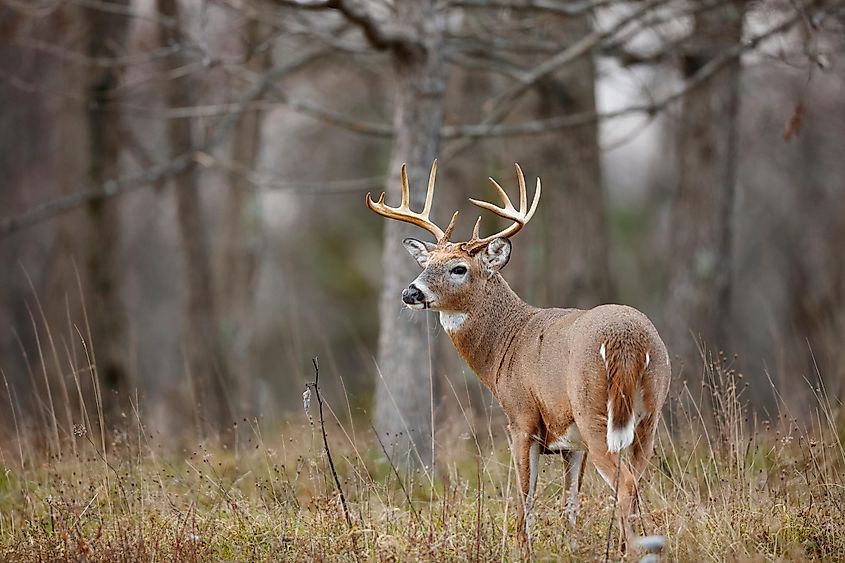
White-tailed deer (Odocoileus virginianus) are not considered dangerous because they attack humans; instead, they are prevalent on roads and highways, making them a frequent cause of accidents. In Pennsylvania, they can be found throughout their territory, choosing to stay in forested and prairie areas with abundant pasture. White-tailed deer grow to a height of 70 inches and have a brown coat that turns gray in winter. Males grow mighty antlers that shed during winter. These animals are commonly spotted in suburban and urban settlements, where they come looking for a quick snack in the bird feeders.
Their obsession with roads and highways, especially at night, makes them an excellent accident hazard, as they often run across the road without warning. Besides, they don’t threaten humans much, although males may attack using their sharp antlers when you trespass into their territories during mating season.
Wild Boar
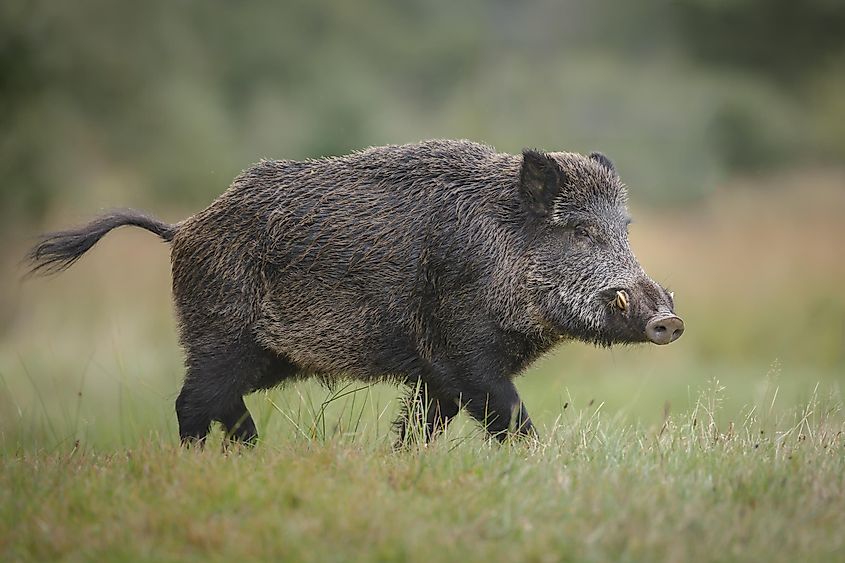
Wild boars (Sus crofa), or feral hogs, mainly occur in the south-central counties of Pennsylvania and the north-central region. These omnivorous creatures are known to be prolific, which has caused an explosion in their population. They are also an invasive species that destroys crops, leading to constant conflicts with farmers. Wild boars have a big head with intimidating tusks that hang precariously out of the mouth. Their chunky bodies are held together by short, stout legs, with adults growing 8 feet long and 600 pounds heavy. With a fearless attitude, feral hogs won’t wait for an invitation to attack humans when they feel cornered.
Hikers, campers, and other outdoor adventurers constantly encounter them in the Pennsylvania wilderness. It is best to elude them, especially when there are babies involved. Their voracious appetite makes them detrimental to ecosystems, calling for management of their populations to avoid losses.
Striped Skunk
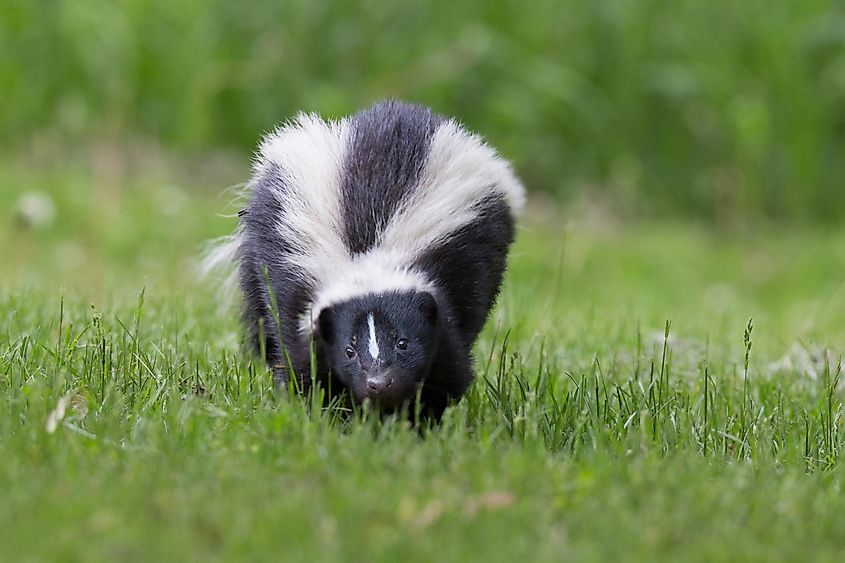
Striped skunks (Mephitis mephitis) in Pennsylvania are found all over the state, with significant concentrations around agricultural areas. Their diet is primarily insectivorous, feeding on beetles, bees, crickets, and other insects. Skunks are between 18 and 30 inches long and distinguishable by the two thick white stripes that run down their backs, contrasting the black color. They also have a thick tail and small triangular heads. Skunks have a nasty reputation stemming from their not-so-standard defense mechanism. When threatened, they spray an unpleasant, oily liquid into the aggressor’s face, which causes irritation, pain, nausea, and temporary blindness.
Other than the foul odor, skunks are a physical threat to humans. On the contrary, they are essential to the environment, serving as a natural form of pest control. The only course of action when you encounter one of these animals is to find a way around them to prevent triggering it and getting sprayed.
Wasp
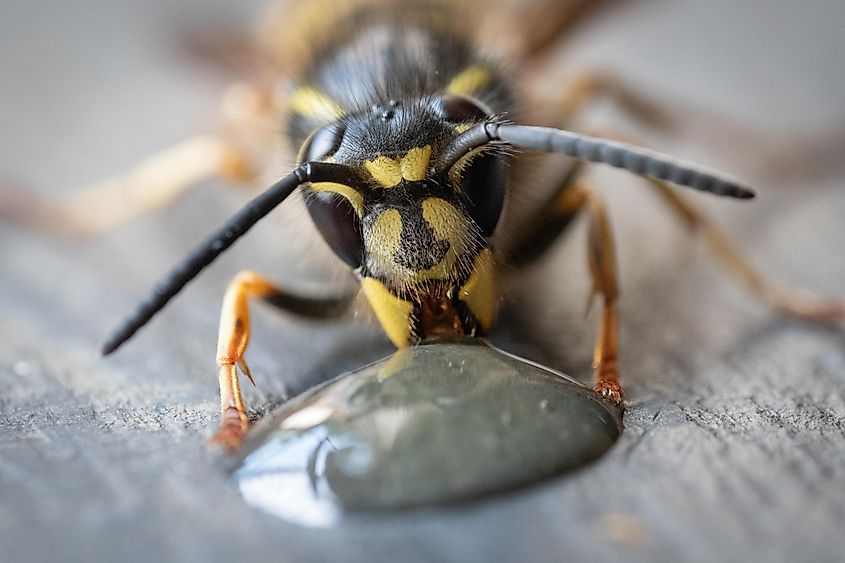
The terms "yellow jacket" and "hornet" are commonly used to refer to wasps (Vespula vulgaris) from the Vespidae family. These aggressive insect species are found throughout the state and often establish sizable aerial or underground nests in forests and gardens. This proximity to human settlements sometimes leads to conflict, as the defensive wasps may feel threatened by unwarranted disturbances near their nests. While playing an important ecological role as pollinators, wasps demonstrate protective, predatory instincts and can launch attacks when aggravated. Their venomous stings are painful and may cause allergic reactions of varying severity between individuals.
Though often confused with bees, wasps can be distinguished by their larger size and leg spines rather than fuzzy hair. Despite their potential danger to humans, wasps should not be needlessly harmed, given their environmental benefits. Caution is advisable when living or recreating near wasp nesting areas. By avoiding disturbing inactive nests and recognizing early warning signs of agitation, unwanted interactions may be prevented.
Final Thoughts
While Pennsylvania is home to many beautiful and harmless wildlife species, it is crucial to be aware of the few deadly animals that could pose risks, especially in certain situations. By understanding the habitats and behaviors of snakes, insects, and other potentially dangerous creatures, residents and visitors can take appropriate precautions to stay safe outdoors. Whether keeping food stored away from curious bears or steering clear of disturbing wasp nests, exercising caution helps prevent conflicts. With knowledge and respect shown to all animals in Pennsylvania, people can continue to appreciate the diverse natural heritage of the state for many years to come.











